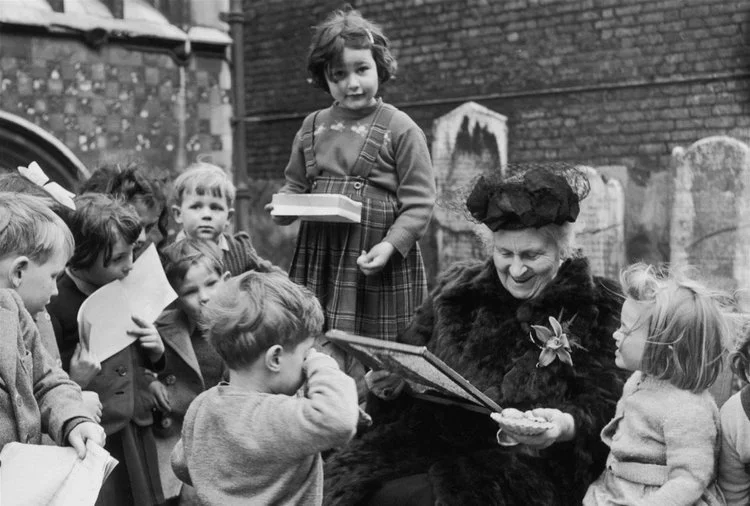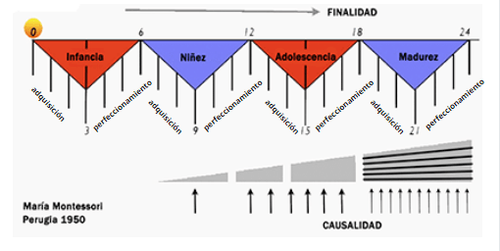Planes of development
By: Gladiza Santiago
Maria Montessori, through her work with children and young people, concluded that human development does not occur in an ascending linear fashion, but through a series of formative planes. Montessori identified four periods or planes of development that explain how the human being is formed from birth to adulthood.
In each plane there is a specific goal of development. Therefore, the developing child and young person works intensely towards the achievement of that goal through the manifestation of human tendencies and of the particular sensitive periods of the plane in which they find themselves.
Sensitive periods at the beginning of each plane appear, increase, reach their maximum and decline to later give way to new sensitivities and so on. That is why the changes that occur from one plane to another are extraordinary.
The first plane is that of infancy and it begins at birth up to six years old. The main goal or direction of development at this plane leads the child to "build" himself; to want to be independent. He wants to do things for himself.
In this period the physical growth of the child is intense. The tendency to explore is sensory. His mind is like a sponge because it seems as if the child "absorbed" everything around him through the senses. This is also a sensitive period for the development of language, order, movement and the refinement of the senses. The child's thinking is concrete and character is beginning to form.
The second plane of development is that of childhood. It includes ages 6 to 12 years old. The goal during this plane is the development of intellectual independence. The child wants to think for himself. It is a sensitive period for the development of the imagination, abstraction and morality. It is a period of relative physical calm. The child absorbs the culture and shows the tendency to social exploration, since he already shows interest in working in a group. It is in this period that he is also interested in knowing, above all, what surrounds him.
The third plane is that of adolescence, which manifests itself from 12 to 18 years old. The goal of development is the formation of the social being. The adolescent goes through intense physical development, hormonal changes and emotional imbalance. This is a period of social exploration as the adolescent wishes to integrate into society. They seek independence from authority and like to discuss or debate abstract ideas thanks to their capacity for critical thinking.
Finally, the fourth plane is that of maturity. Between the ages of 18 to 24 years old. The goal of development is the formation of the citizen of the world through self-awareness and self-realization.
The physical changes are already complete in the young adult. It is a plane of stability and relative calm. The human being is a “specialized explorer” who prepares himself to aspire to economic independence and to contribute to society through a profession or trade. The young adult wants to be useful and productive because of the sense of responsibility he feels towards the world.
To conclude, it is important to mention that each plane is built on the previous one, so the experiences that the boy, girl or young person has had will affect their next period of development.


